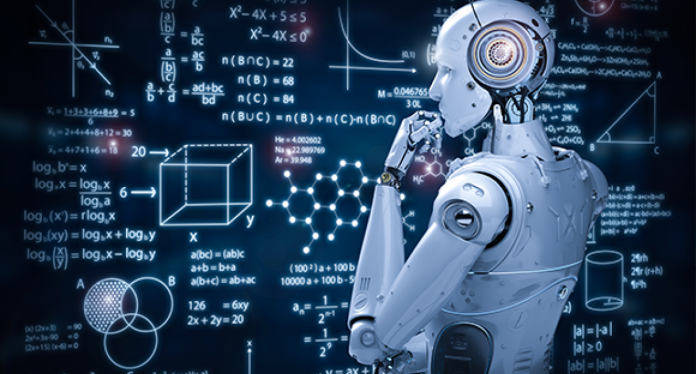The term ‘machine learning’ is used to describe the process of turning the machines smarter day by day in today’s technologically advanced environment. Machine learning serves as the foundation for the creation of voice assistants, tailored recommendations, and other intelligent applications.
The core of this intelligence is the machine learning algorithm, through which a computer learns from data and then makes decisions to some lower or higher extent without human intervention.
This article will explore what these algorithms are, the types, and their common daily life application, in addition to the top 10 machine learning algorithms.
Machine learning algorithms are sequences of instructions or models that allow computers to learn patterns from data and make decisions or prediction under conditions of uncertainty without explicit programming. Such an algorithm helps machines improve their performance in some task over time by processing data and observing trends.
In simple words, these enable computers to learn from data, just as humans learn from experience.
Types of Machine Learning Algorithms:
Machine learning algorithms fall into three main types-
- Supervised learning
These are systems of algorithms that work on data feeding from a system or set of systems and help form a conclusion from the data. In supervised learning, algorithms learn from labeled data, which means the dataset contains both input variables and their corresponding output. The goal is to train the model to make predictions or decisions. Common supervised learning algorithms include:
- Linear Regression
- Logistic Regression
- Decision Trees
- Random Forests
- Support Vector Machines
- Neural Networks
- Unsupervised learning
In this type of algorithms, the machine learning system studies data for pattern identification. There is no answer key provided and human operator instructing the computer. Instead, the machine learns correlations and relationships by analysing the data available to it. In unsupervised learning, the machine learning algorithm applies its knowledge to large data sets. Common unsupervised learning techniques include:
- Clustering
- Association
- Principal Component Analysis (PCA)
- Autoencoders
- Reinforcement learning
Reinforcement learning focuses on regimented learning. That is, a machine learning algorithm is given a set of actions, parameters, and an end value. Reinforcement learning is trial and error learning for the machine. It learns from past experiences and begins to modify its approach depending on circumstances.
- Q-learning
- Deep Q-Networks
- Policy Gradient Methods
- MCTS(Monte Carlo Tree Search)
Applications of Machine Learning Algorithm:
Many sectors utilize machine learning algorithms to improve decision-making and tackle complicated challenges.
- In transportation, machine learning enables self-driving cars and smart traffic systems
- In the healthcare sector, the algorithms promote disease diagnosis.
- In the finance industry, it power fraud detection, credit scoring and stock market forecasting.
- Cybersecurity relies on it for threat detection and facial recognition.
- Smart assistants, where NLP—drives voice recognition, language understanding, and contextual responses.
It also plays a vital role in agriculture, education, and smart city infrastructure, making it a cornerstone of modern innovation.
Machine Learning Algorithms Examples:
Machine learning algorithms are models that help computers learn from data and make predictions or decisions without being explicitly programmed. Examples include linear regression, decision trees, random forests, K-means clustering, and Q-learning, used across fields like healthcare, finance, and transportation.
Top 10 Machine Learning Algorithms:
- Linear Regression
Linear regression is a supervised machine learning technique, used for predicting and forecasting continuous-valued sales or housing prices. It is a technique that has been borrowed from statistics and is applied when one wishes to establish a relationship between one input variable (X) and one output variable (Y) using a straight line.
- Logistic Regression
Logistic regression is a supervised learning algorithm primarily used for binary classification problems. It allows to classify input data into two classes on the basis of probability estimate and set threshold. Hence, for the need to classify data into distinct classes, logistic regression stands useful in image recognition, spam email detection, or medical diagnosis.
- Decision Tree
Decision trees are supervised algorithms developed to address problems related to classification and prediction. It also looks very similar to a flow-chart diagram: a root node positioned at the top, which poses the first question on the data; given the answer, the data flows down one of the branches to another internal node with another question leading further down the branches. This continues until the data reach an end node
- Random Forest
Random forest is an algorithm which offers an ensemble of decision trees for classification and predictive modelling purposes. Unlike a single decision tree, random forest offers better predictive accuracy by combining predictions from many decision trees.
- Support Vector Machine (SVM)
Support vector machine is a supervised learning algorithm that can be applied for both classification and the prediction of instances. The appeal of SVM lies in the fact that it can build reliable classifiers even when very small samples of data are available. It builds a decision boundary called a hyperplane; a hyperplane in two-dimensional space is simply a line separating two sets of labeled data.
- K-Nearest Neighbors (KNN)
K-nearest neighbor (KNN) is a supervised learning model enhanced for classification and predictive modelling. K-nearest neighbour gives a clue about how the algorithm approaches classification: it will decide output classes based on how near they are to other data points on a graph.
- Naive Bayes
Naive Bayes describes a family of supervised learning algorithms used in predictive modelling for the binary or multi-class classification problems. It assumes independence between the features and uses Bayes’ Theorem and conditional probabilities to give an estimate of the likelihood of classification given all the feature values.
- K-Means Clustering
K-means is an unsupervised clustering technique for pattern recognition purposes. The objective of clustering algorithms is to partition a given data set into clusters such that the objects in one cluster are very similar to one another. Similar to the KNN (Supervised) algorithm, K-means clustering also utilizes the concept of proximity to find patterns in data.
- Principal Component Analysis (PCA)
Principal Component Analysis (PCA) is a statistical technique used to summarize information contained in a large data set by projecting it onto a lower-dimensional subspace. Sometimes, it is also regarded as a dimensionality reduction technique that tries to retain the vital aspects of the data in terms of its information content.
- Gradient Boosting (XGBoost/LightGBM)
The gradient boosting methods belong to an ensemble technique in which weak learners are iteratively added, with each one improving over the previous ones to form a strong predictive model. In the iterative process, each new learner is added to correct the errors made by the previous models, gradually improving the overall performance and resulting in a highly accurate final model
Conclusion:
Machine learning algorithms are used in a variety of intelligent systems: from spam filters and recommendation engines to fraud detection and even autonomous vehicles. Knowledge of the most popular algorithms, such linear regression, decision trees, and gradient boosting, explains how machines learn, adapt, and assist in smarter decision-making across industries. As data grows without bounds, the mastery of these algorithms becomes ever so vital in the effort toward innovation and problem solving in this digital age.








